AEA R44CX Handleiding
Bekijk gratis de handleiding van AEA R44CX (5 pagina’s), behorend tot de categorie Microfoon. Deze gids werd als nuttig beoordeeld door 25 mensen en kreeg gemiddeld 4.9 sterren uit 13 reviews. Heb je een vraag over AEA R44CX of wil je andere gebruikers van dit product iets vragen? Stel een vraag
Pagina 1/5

R44C/CX
Quickstart Manual
changes had altered the microphone during the production years of 1936 through 1958. We con-
sulted many engineers and users and decided that the earlier versions from the 30’s to mid-40’s
were the all-around favorite, the ones with the ‘magic sound.’
The AEA R44C/CX is a faithful reproduction, down to one ten-thousandth of an inch. The parts
are completely interchangeable with a real 44, the only difference being the magnets. Our modern
AEA R44C/CX uses Neodymium magnets, which are more powerful than the Alnico originals.
This produces an output level that is about 1 dB higher than the original microphone, while our
R44CX High Output version is about 5 dB higher. The ribbon is made from the original RCA rib-
bon stock! Yes, some of the real stuff had been stored for all these years after RCA discontinued
that arm of its business. We also were able to garner some help from one of the original RCA engi-
neers. With their invaluable help, we were able to make this legendary microphone available again.
THE RESULT IS THE AEA R44C and CX.
Painstakingly crafted, and hand-assembled, it looks, feels, and sounds EXACTLY like the original.
All of us at AEA are extremely proud to be involved in the reissue of this beloved microphone.
But fi rst, there are a few things you should know about your new R44…
CONGRATULATIONS on your purchase of an
AEA R44 Microphone!
The AEA R44 is an exacting reproduction of the RCA 44B/BX Ve-
locity Microphone, circa 1936.
Audio Engineering Associates had already been buying, selling,
and repairing vintage RCA and other ribbon microphones for two
decades, before deciding to reissue the RCA 44. The fi rst question,
however, was “Which model should we rerelease?” Many design
A Eudio ngineering
Associates
1029 N. Allen Ave., Pasadena, CA 91104 www.ribbonmics.com Phone: (626) 798-9128 Fax: (626) 798-2378

It’s big and heavy!
Yes. About 13 ½ inches (34.3 cm), and about 8 ½ pounds (3.8 Kg).
Remember that we are working with 1936 technology. In order to create a magnetic field powerful
enough to yield a useable output, the magnets and the framework to support them had to be big and
heavy.
It’s bidirectional!
True. With the magnets and their support and focusing structures wrapping around the sides, top
and bottom, the ribbon, which is about .2 inches (.5 cm) wide and about 2 inches (5.08 cm) long,
is exposed front and rear. The microphone is therefore, is inherently bidirectional, with the only
difference between front and rear response being polarity (phase). The strength of a bidirectional
microphone includes the excellent null rejection that naturally occurs at the plane of the ribbon
providing good isolation of signals approaching 90 degrees off-axis.
So, how does it work?
The 44 is a ribbon microphone. An extremely thin aluminum ribbon is placed within a powerful
magnetic field. Any sound energy, which moves the ribbon, causes it to travel within the magnetic
field. This generates a tiny electrical current within the ribbon, which is an exact analog of the
sound. It is called a velocity microphone because its output is a function of particle velocity. Next,
there is a transformer, which converts the extremely low impedance of the ribbon to a more useable
level. And that’s it, no power supply, no pad, and no pattern selector.
The most elegant things in life are always the simplest, don’t you think? But it is precisely this
simplicity that leads to the character of sound that has been cherished for so many years. No damp-
ing, no uncomfortable resonances in the audible range, and no active electronics preserve more
sonic accuracy than most or all microphones because no external features are introduced to the
signal. This accounts for the “truthfulness” of the sound that has made the 44 a classic.
It’s delicate!
The ribbon has to be able to respond to the tiniest amount of acoustic energy in the air. To do this,
it must be ‘air-like’, or low mass. Low mass means thin, and the ribbon in the 44 is 1.8 microns
(1.8 uM) thick, or about one-fiftieth the thickness of a human hair! The ribbon is as thin and deli-
cate as it is because it must be able to react to the air mass around it. It cannot be protected and iso-
lated, but must be exposed to all the extremes that a noisy and sometimes careless world can inflict
on it. This is the strength, and the weakness, of all ribbon microphones. The low mass of the ribbon
results in an excellent transient response because it is able to “pretend that it is air.”
Because the ribbon is supposed to register every tiny movement of air, this makes it extremely sen-
sitive to moving air. There is a big difference between air that is moving in a pressure wave, which
is energy moving through air in the same way that waves move through the ocean, and , which wind
is a current, or mass of air, moving from one place to another. Wind is a tremendous stressor to a
ribbon and you should protect your microphone from it. Wind can stretch the ribbon which effec-
tively detunes it and will change the character of your microphone.

It is best to store it vertically.
The case provided with your R44 is specifically designed to store it in the recommended vertical
position. The ribbon, which is about 2 inches long (the longest of any microphone), could be de-
graded by long-term storage in a horizontal position. Gravity will cause the ribbon to sag, and can
lead to stretching over time.
Store your microphone in a plastic bag.
Remember what lies at the heart of this microphone….an ultrathin wisp of metal that, except for
the outside grill and some internal blast shields is completely exposed to the air around it. HVAC
vents, swinging it in your hand as you walk across the studio, excessive SPLs, things like this can
damage or destroy the ribbon. Some engineers feel that it should ALWAYS be bagged except when
in actual use. Your R44 has been provided with an exact reproduction of the gray twill bag that
RCA shipped with their mics. Any plastic or paper bag will do. Besides protecting the microphone
from stray air currents, the bag also protects against against tramp iron.
‘Tramp iron’
The horizontal surfaces in any technical space are likely to have microscopic bits of metal on them.
If you put your R44 down on such a surface, the powerful magnetic field will pick up this ‘tramp
iron’. That is bad, but it gets worse. As time goes by, these tiny bits will work their way inside the
microphone, and eventually get to where the magnetic field is the strongest, which is the gap where
the ribbon is. Now, they will start to combine and build ‘whiskers’ across the gap, following the
magnetic lines of force. These whiskers will interfere with the functioning of the ribbon.
We have seen this many times with the old RCA mics. The ribbon is OK, but it is impossible to
clean out the whiskers without removing the ribbon. Unfortunately, it is also impossible to remove
and then reinstall the same ribbon without damaging it, so a good ribbon must be replaced because
of tramp iron.
It doesn’t need, want, or like, phantom power!
What happens when this mic is connected to phantom power? Well, the answer ranges all the way
from ‘nothing’ to ‘total disaster.’ If the phantom power is perfect, and the cable is perfect, and the
connection transient isn’t too severe, fine. But a bad cable, or unbalanced voltages, or bad patch-
point, or large transient can damage or destroy the ribbon. It is much better and safer to not connect
this microphone to phantom power!
A little extra care in the use and handling of this microphone is all that is needed, and it will give
you decades of service. The 44 has been the favorite of recording engineers for nearly as long as
there have BEEN recording engineers! Its warm, rich, powerful voice is unmistakable, and irre-
placeable.
ENJOY!!
Product specificaties
| Merk: | AEA |
| Categorie: | Microfoon |
| Model: | R44CX |
Heb je hulp nodig?
Als je hulp nodig hebt met AEA R44CX stel dan hieronder een vraag en andere gebruikers zullen je antwoorden
Handleiding Microfoon AEA
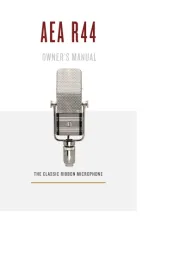
12 April 2025

5 Februari 2025

11 November 2024

7 Mei 2024

21 Februari 2024

21 Februari 2024

21 Februari 2024

21 Februari 2024

21 Februari 2024

21 Februari 2024
Handleiding Microfoon
- Speed-Link
- Denver
- Phenyx Pro
- Manhattan
- American Audio
- Countryman
- Antelope Audio
- Sandberg
- Ponovo
- Genesis
- FDUCE
- The T.bone
- TECURS
- Artsound
- Lauten Audio
Nieuwste handleidingen voor Microfoon
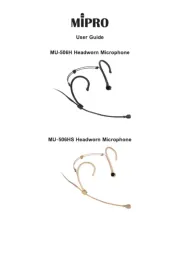
29 Juli 2025
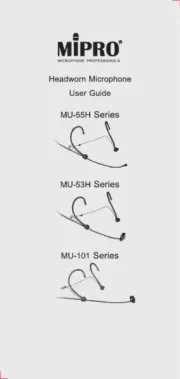
29 Juli 2025
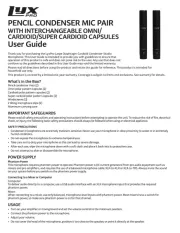
29 Juli 2025

29 Juli 2025
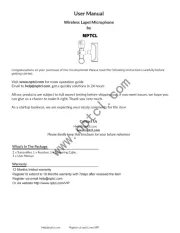
28 Juli 2025
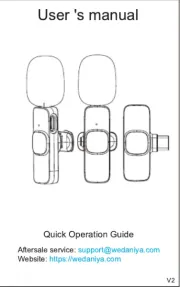
28 Juli 2025
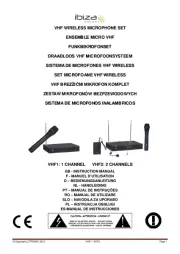
28 Juli 2025
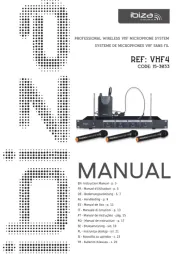
28 Juli 2025
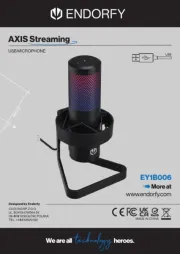
23 Juli 2025
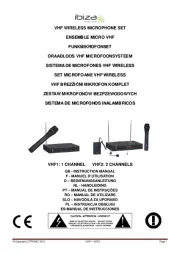
22 Juli 2025